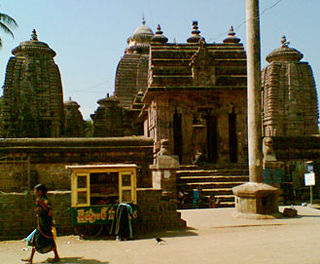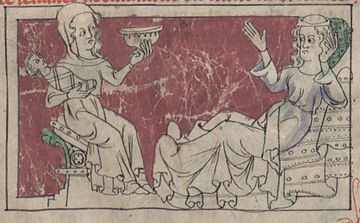
Odisha, formerly Orissa, is an Indian state located in Eastern India. It is the 8th largest state by area, and the 11th largest by population. The state has the third largest population of Scheduled Tribes in India. It neighbours the states of Jharkhand and West Bengal to the north, Chhattisgarh to the west, and Andhra Pradesh to the south. Odisha has a coastline of 485 kilometres (301 mi) along the Bay of Bengal in Indian Ocean. The region is also known as Utkala and is also mentioned in India's national anthem, "Jana Gana Mana". The language of Odisha is Odia, which is one of the Classical Languages of India.
Kalinga, is a historical region of India. It is generally defined as the eastern coastal region between the Mahanadi and the Godavari rivers, although its boundaries have fluctuated with the territory of its rulers. The core territory of Kalinga now encompasses a large part of Odisha and northerneastern part of Andhra Pradesh. At its widest extent, the Kalinga region also included parts of present-day Chhattisgarh, extending up to Amarkantak in the west.

The strix, in the mythology of classical antiquity, was a bird of ill omen, the product of metamorphosis, that fed on human flesh and blood. It also referred to witches and related malevolent folkloric beings.

The Kalinga War was fought in ancient India between the Maurya Empire under Ashoka and the state of Kalinga, an independent feudal kingdom located on the east coast, in the present-day state of Odisha and northern parts of Andhra Pradesh. It is presumed that the battle was fought on Dhauli hills in Dhauli which is situated on the banks of Daya River. The Kalinga War was one of the largest and deadliest battles in Indian history. Kalinga did not have a king as it was culturally run without one.
The Rishikas was an ancient Kingdom of Central Asia and South Asia, who are mentioned in Hindu and Sanskrit literary texts, including the Mahabharata, the Ramayana, the Brhat-Samhita, the Markendeya Purana and Patanjali's Mahabhashya.

Panchala was an ancient kingdom of northern India, located in the Ganges-Yamuna Doab of the Upper Gangetic plain. During Late Vedic times, it was one of the most powerful states of ancient India, closely allied with the Kuru Kingdom. By the c. 5th century BCE, it had become an oligarchic confederacy, considered one of the solasa (sixteen) mahajanapadas of the Indian subcontinent. After being absorbed into the Mauryan Empire, Panchala regained its independence until it was annexed by the Gupta Empire in the 4th century CE.

Khasas were an ancient Indo-Aryan tribe and a late Janapada kingdom from Himalayan regions of northern Indian subcontinent mentioned in the various historical Indian inscriptions and ancient Indian Hindu and Tibetan literatures. European sources described the Khasa tribe living in the Northwest Himalayas and the Roman geographer Pliny The Elder specifically described them as "Indian people". They were reported to have lived around Gandhara, Trigarta and Madra Kingdom as per the Mahabharata.
Keling or Kling is a derogatory term used in parts of Southeast Asia to denote a person originating from the Indian subcontinent. This includes both those from India and overseas Indians. In modern usage it is not commonly capitalised. The term is used in the Malay Archipelago — specifically Malaysia, Indonesia, Singapore and Brunei — but cognates exist in neighbouring countries as well. Although the early definition was neutral and linked to the historical Kalinga kingdom of Eastern India, it is generally considered offensive by Indians in Southeast Asia.

Ashmaka or Assaka was a Mahajanapada in ancient India which existed between 700 BCE and 425 or 345 BCE according to the Buddhist texts Anguttara Nikaya and Puranas. It was located around and between the Godavari river in present-day Telangana and Maharashtra. Its capital is variously called Potali or Podana, and is identified as present-day Bodhan in Telangana.

Gangaridai is a term used by the ancient Greco-Roman writers to describe a people or a geographical region of the ancient Indian subcontinent. Some of these writers state that Alexander the Great withdrew from the Indian subcontinent because of the strong war elephant force of the Gangaridai.

Cleostratus was an astronomer of ancient Greece. He was a native of Tenedos. He is believed by ancient historians to have introduced the zodiac and the solar calendar. According to J. Webb, Cleostratus took his ideas from the Babylonians.
The jugerum or juger was a Roman unit of area, equivalent to a rectangle 240 Roman feet in length and 120 feet in width, i.e. 28,800 square Roman feet or about 1⁄4 hectare (0.623 acre).

Human history in Odisha begins in the Lower Paleolithic era, as Acheulian tools dating to the period have been discovered in various places in the region. The early history of Odisha can be traced back to the mentions found in ancient texts like the Mahabharata, Maha Govinda Sutta and some Puranas.The region was also known to other kingdoms in region of East Indies due to maritime trade relations.

Uttarandhra, also known as Kalinga Andhra is a region consisting of six northern districts of the Indian state of Andhra Pradesh. It comprises the districts of Srikakulam, Parvathipuram Manyam, Vizianagaram, Visakhapatnam, Alluri Sitharama Raju and Anakapalli. As of 2011 census of India, the region with six districts has a population of 9,338,177.

The Maritime history of Odisha, known as Kalinga in ancient times, started much before 800 BC according to early sources.The Kalinga country originally comprised the present Puri and Ganjam Districts of Modern Orissa. Reference-Misra, Sudama (1973). Janapada state in ancient India. Vārāṇasī: Bhāratīya Vidyā Prakāśana. Archived from the original on 17 August 2016. Retrieved 18 July 2016.The people of this region of eastern India along the coast of the Bay of Bengal sailed up and down the Indian coast, and travelled to Indo China and throughout Maritime Southeast Asia, introducing elements of their culture to the people with whom they traded. The 6th century Manjusrimulakalpa mentions the Bay of Bengal as Kalingodra and in ancient Classical India, the Bay of Bengal was known as Kalinga Sagar, indicating the importance of Kalinga in the maritime trade. The old traditions are still celebrated in the annual Boita Bandana festival including its major celebration at Cuttack on the banks of Mahanadi river called Bali Jatra, and are held for seven days in October-November at various coastal districts, most famous at Cuttack though.
In Greek mythology, Pandaie or Pandae was a daughter of Heracles whom he fathered in India.

The Janapadas were the realms, republics (ganapada) and kingdoms (saamarajya) of the Vedic period on the Indian subcontinent. The Vedic period reaches from the late Bronze Age into the Iron Age: from about 1500 BCE to the 6th century BCE. With the rise of sixteen Mahajanapadas, most of the states were annexed by more powerful neighbours, although some remained independent.

A chaplet is a headdress in the form of a wreath made of leaves, flowers or twigs woven into a ring. It is typically worn in festive occasions and on holy days. In ancient times it also served as a crown representing victory or authority.
Trikalinga is a region of central-east India, mentioned in several historical sources. Its identification and its relation to the term "Kalinga" is debated among modern historians, who variously identify it as a distinct region to the west of Kalinga, a larger region comprising Kalinga and two other regions, a constituent of the greater Kalinga, or the three divisions of Kalinga proper.













